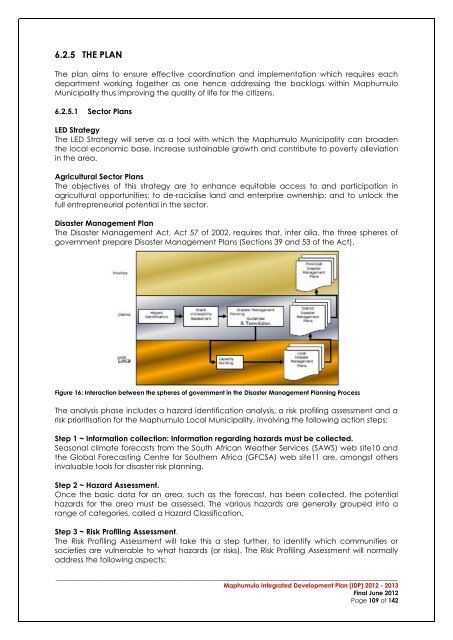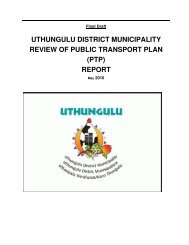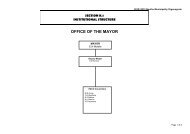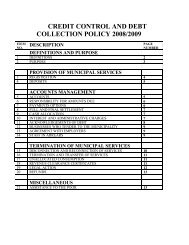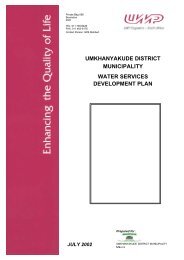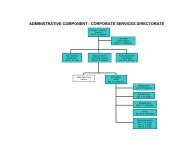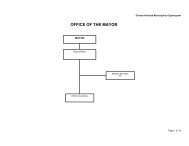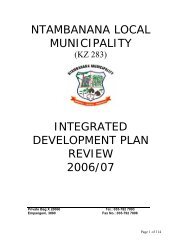Maphumulo IDP - KZN Development Planning
Maphumulo IDP - KZN Development Planning
Maphumulo IDP - KZN Development Planning
You also want an ePaper? Increase the reach of your titles
YUMPU automatically turns print PDFs into web optimized ePapers that Google loves.
6.2.5 THE PLANThe plan aims to ensure effective coordination and implementation which requires eachdepartment working together as one hence addressing the backlogs within <strong>Maphumulo</strong>Municipality thus improving the quality of life for the citizens.6.2.5.1 Sector PlansLED StrategyThe LED Strategy will serve as a tool with which the <strong>Maphumulo</strong> Municipality can broadenthe local economic base, increase sustainable growth and contribute to poverty alleviationin the area.Agricultural Sector PlansThe objectives of this strategy are to enhance equitable access to and participation inagricultural opportunities; to de-racialise land and enterprise ownership; and to unlock thefull entrepreneurial potential in the sector.Disaster Management PlanThe Disaster Management Act, Act 57 of 2002, requires that, inter alia, the three spheres ofgovernment prepare Disaster Management Plans (Sections 39 and 53 of the Act).Figure 16: Interaction between the spheres of government in the Disaster Management <strong>Planning</strong> ProcessThe analysis phase includes a hazard identification analysis, a risk profiling assessment and arisk prioritisation for the <strong>Maphumulo</strong> Local Municipality, involving the following action steps:Step 1 ~ Information collection: Information regarding hazards must be collected.Seasonal climate forecasts from the South African Weather Services (SAWS) web site10 andthe Global Forecasting Centre for Southern Africa (GFCSA) web site11 are, amongst othersinvaluable tools for disaster risk planning.Step 2 ~ Hazard Assessment.Once the basic data for an area, such as the forecast, has been collected, the potentialhazards for the area must be assessed. The various hazards are generally grouped into arange of categories, called a Hazard Classification.Step 3 ~ Risk Profiling Assessment.The Risk Profiling Assessment will take this a step further, to identify which communities orsocieties are vulnerable to what hazards (or risks). The Risk Profiling Assessment will normallyaddress the following aspects:__________________________________________________________________________________________<strong>Maphumulo</strong> Integrated <strong>Development</strong> Plan (<strong>IDP</strong>) 2012 - 2013Final June 2012Page 109 of 142


